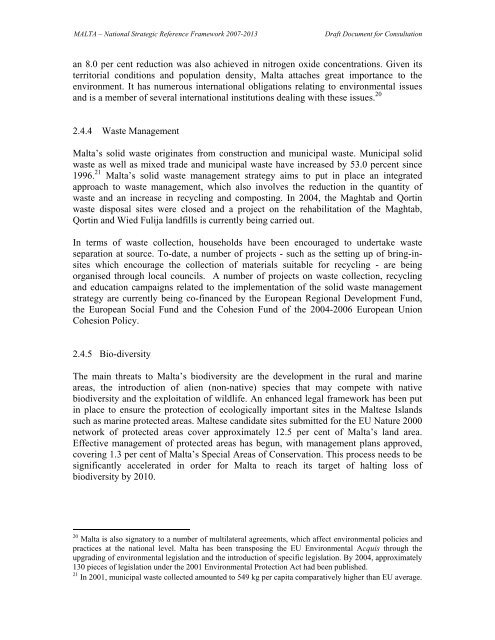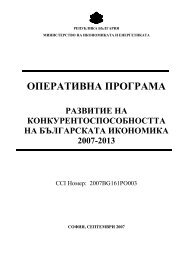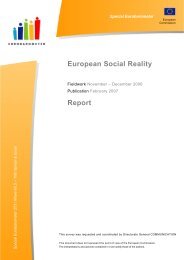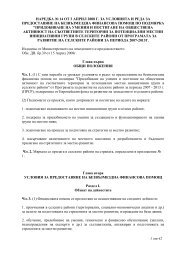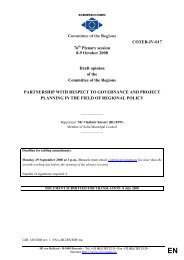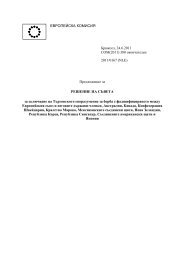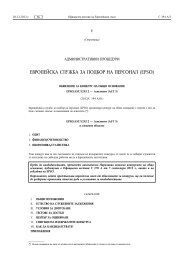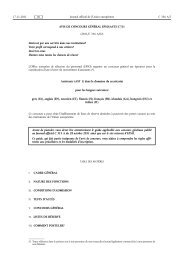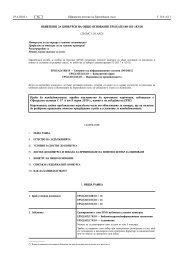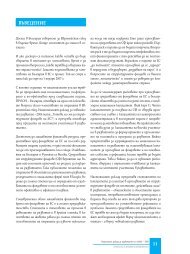National Strategic Reference Framework
National Strategic Reference Framework
National Strategic Reference Framework
Create successful ePaper yourself
Turn your PDF publications into a flip-book with our unique Google optimized e-Paper software.
MALTA – <strong>National</strong> <strong>Strategic</strong> <strong>Reference</strong> <strong>Framework</strong> 2007-2013 Draft Document for Consultation<br />
an 8.0 per cent reduction was also achieved in nitrogen oxide concentrations. Given its<br />
territorial conditions and population density, Malta attaches great importance to the<br />
environment. It has numerous international obligations relating to environmental issues<br />
and is a member of several international institutions dealing with these issues. 20<br />
2.4.4 Waste Management<br />
Malta’s solid waste originates from construction and municipal waste. Municipal solid<br />
waste as well as mixed trade and municipal waste have increased by 53.0 percent since<br />
1996. 21 Malta’s solid waste management strategy aims to put in place an integrated<br />
approach to waste management, which also involves the reduction in the quantity of<br />
waste and an increase in recycling and composting. In 2004, the Maghtab and Qortin<br />
waste disposal sites were closed and a project on the rehabilitation of the Maghtab,<br />
Qortin and Wied Fulija landfills is currently being carried out.<br />
In terms of waste collection, households have been encouraged to undertake waste<br />
separation at source. To-date, a number of projects - such as the setting up of bring-insites<br />
which encourage the collection of materials suitable for recycling - are being<br />
organised through local councils. A number of projects on waste collection, recycling<br />
and education campaigns related to the implementation of the solid waste management<br />
strategy are currently being co-financed by the European Regional Development Fund,<br />
the European Social Fund and the Cohesion Fund of the 2004-2006 European Union<br />
Cohesion Policy.<br />
2.4.5 Bio-diversity<br />
The main threats to Malta’s biodiversity are the development in the rural and marine<br />
areas, the introduction of alien (non-native) species that may compete with native<br />
biodiversity and the exploitation of wildlife. An enhanced legal framework has been put<br />
in place to ensure the protection of ecologically important sites in the Maltese Islands<br />
such as marine protected areas. Maltese candidate sites submitted for the EU Nature 2000<br />
network of protected areas cover approximately 12.5 per cent of Malta’s land area.<br />
Effective management of protected areas has begun, with management plans approved,<br />
covering 1.3 per cent of Malta’s Special Areas of Conservation. This process needs to be<br />
significantly accelerated in order for Malta to reach its target of halting loss of<br />
biodiversity by 2010.<br />
20 Malta is also signatory to a number of multilateral agreements, which affect environmental policies and<br />
practices at the national level. Malta has been transposing the EU Environmental Acquis through the<br />
upgrading of environmental legislation and the introduction of specific legislation. By 2004, approximately<br />
130 pieces of legislation under the 2001 Environmental Protection Act had been published.<br />
21 In 2001, municipal waste collected amounted to 549 kg per capita comparatively higher than EU average.


